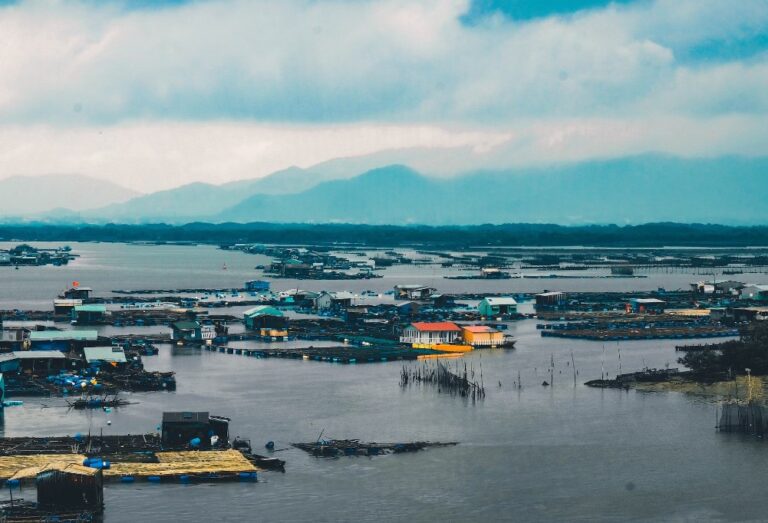The past 30 years have witnessed a staggering rise in global extreme weather events, a trend underscored by United Nations reports. Experts, sounding alarms, attribute this spike to climate change’s intensifying effects. The Associated Press highlights how climate change isn’t just increasing these events, but “supercharging” them, amplifying both frequency and intensity.
In 2023, this trend has become more pronounced than ever. According to NPR and the American Meteorological Society’s annual report, we’re now seeing “compound events” – a new phenomenon where climate change triggers multiple extreme weather occurrences simultaneously. Sarah Kapnick, the chief scientist at the National Oceanic and Atmospheric Administration, echoes this concern, noting that the risk of extreme events is escalating globally.
Table of Contents
The extreme weather events experienced monthly in 2023
January
January set a startling tone for 2023, marking the sixth warmest January on record in the U.S. with an average temperature of 35.2°F, as reported by the NOAA. A jet stream carried warmer Pacific air across the country, and high pressure diverted storms westward.
The month also saw record-breaking rainfall, ranking as the third wettest January ever recorded. California, grappling with drought, was hit by a series of atmospheric rivers, leading to 10 severe storms. These storms unleashed floods, landslides, and heavy snow in mountain areas, as detailed by the Los Angeles Times.
February
February commenced with a striking ice storm sweeping through Texas and the Midwest, accompanied by freezing Northeast temperatures. The Midwest experienced several unusual February tornadoes, as noted by the Post.
The month later showcased a dramatic weather contrast. Southern California battled winter storm conditions, disrupting travel, CNN reports. Meanwhile, the southeast U.S. enjoyed almost spring-like warmth, as per the Post.
March
Cyclone Freddy resurged in March, impacting Madagascar and Mozambique since late February, as reported by the Post. It made a second landfall in Mozambique on March 11. One of the longest-lived and most energetic tropical cyclones on record, Freddy claimed over 400 lives in Malawi and Mozambique and injured many, per Reuters.
California’s atmospheric river event escalated in March, bringing a “bomb cyclone.” This storm, reported by the Post, left two dead and over 100,000 without power. CNN noted that it affected 35 million people with hurricane-level winds, hitting the San Francisco Bay area hardest. ABC News labeled it the “strongest March storm ever recorded in the Bay Area.”
Tornadoes ravaged the South in March, killing at least 25 in Mississippi and one in Alabama, as reported by the AP. With winds reaching between 166 and 200 mph, the National Weather Service rated the storm as an EF-4 tornado.
April
April began with a destructive storm system ravaging the Midwest, South, and Mid-Atlantic from March 31 to April 1. Tornadoes resulted in at least 32 fatalities and widespread power outages. By April 7, tornado deaths in 2023 nearly matched the annual average, as CBS News highlighted.
Tornado activity persisted, with an April 19 storm in Oklahoma claiming three lives. Described as “large and extremely dangerous” by McClain County Emergency Management, it left over 17,000 without power in central U.S. Unstable air triggered high-wind storms across Texas and the South.
This month also saw severe heat waves in Asia and the Mediterranean. Asia, including Bangladesh, India, Laos, and Thailand, recorded some of its highest temperatures, exceeding 113°F, as reported by BBC. Spain and Morocco in the Mediterranean faced temperatures over 101°F, as The New York Times noted. Both heat waves were linked to climate change.
May
With summer approaching, wildfire season kicked off. Alberta, Canada, faced “unusually active” wildfires, impacting global air quality, NOAA tweeted. Smoke spread to several U.S. states, prompting air-quality warnings in regions including Montana, Nebraska, Washington, and Wisconsin.
Cyclone Mocha struck Myanmar and Pakistan mid-month, causing hundreds of deaths and displacing thousands, many being refugees or Rohingya Muslims.
Typhoon Mawar hit Guam, resulting in widespread power outages. Classified as a Category 4 hurricane, it was one of Guam’s strongest recent storms.
June
June started with smoke from Canadian wildfires drifting across the U.S., affecting the Northeast, South, and West. The smoke raised air particulate levels, degrading air quality in numerous areas.
India faced a severe heat wave, leading to power outages and nearly 170 deaths. The AP noted that Indian heat waves are declared when temperatures are significantly above normal or exceed 45°C (113°F).
Mississippi experienced tornadoes, resulting in one death and multiple injuries. Around 50,000 homes lost power.
Tropical Storm Bret formed in the Atlantic, moving towards the eastern Caribbean. The AP reported this as an “unusually early and aggressive start” to the Atlantic hurricane season.
July
From July 3-6, the world experienced its four hottest days on record. July 6 set the peak with a global average temperature of 17.23°C (63.02°F), Axios reported. Heatwaves struck Europe, China, and parts of the U.S., exacerbated by El Niño and warm oceans.
In India, an intensified monsoon season led to devastating floods, claiming at least 100 lives, the Post reported. The floods also caused significant infrastructure damage, making it one of the most extreme weather events witnessed in 2023.
Read also: WMO study reveals: 2023-2027 will be the five hottest years ever
August
August was a month of extreme global temperatures, leading to catastrophic events. Maui in Hawaii faced a devastating wildfire, claiming over 110 lives. Experts, like meteorologist Jeff Masters, linked this to climate change, emphasizing that hotter air increases water vapor, drying out vegetation.
California encountered Tropical Storm Hilary, the first such storm in southern California in 84 years, as reported by the AP. Florida was not spared either; Category 3 Hurricane Idalia wreaked havoc, causing agricultural damage estimated between $78 million and $371 million.
September
September continued the trend of extreme heat. Australia experienced unusual heatwaves for the time of year, raising fire risks in several regions, Reuters noted. Authorities warned of increased bushfire dangers.
Libya faced torrential rains leading to catastrophic floods, also impacting Greece, Bulgaria, and Turkey. Maja Vahlberg from the Red Cross Red Crescent Climate Centre highlighted how climate change and human factors combine to amplify these disasters.
The Eastern Seaboard in the U.S. braced for Tropical Storm Ophelia, which brought strong winds and flooding. However, The Washington Post reported that the storm’s impact was less severe than initially feared.
October
October saw widespread heavy rainfall. New York City faced flooding risks, and Northern Europe was battered by strong winds and floods. The U.K. experienced unusual weather severity, with three fatalities. Andy Page from the Met Office described it as “an exceptional event.”
The Caribbean was hit by Hurricane Tammy, the seventh of the Atlantic hurricane season. The Category 1 storm prompted hurricane warnings across islands, including Guadeloupe, Antigua, and Barbuda, with heavy winds and rainfall, as per the Orlando Sentinel.
November
November, while less extreme, was still marked by notable weather phenomena. Florida experienced heavy rainfall, leading to flooding and strong wind gusts. The New York Times reported that saturated soils in the region exacerbated the flooding.
Asia recorded unusually high temperatures for November. The Washington Post noted extremes from the low 70s in Mongolia to nearly 100 in the Philippines, with temperatures up to 35 degrees above normal. This trend aligned with the year’s climate records, witnessing widespread heatwaves globally.
Read also: COP28 in Dubai: agreements and latest updates from the UN Climate Conference












